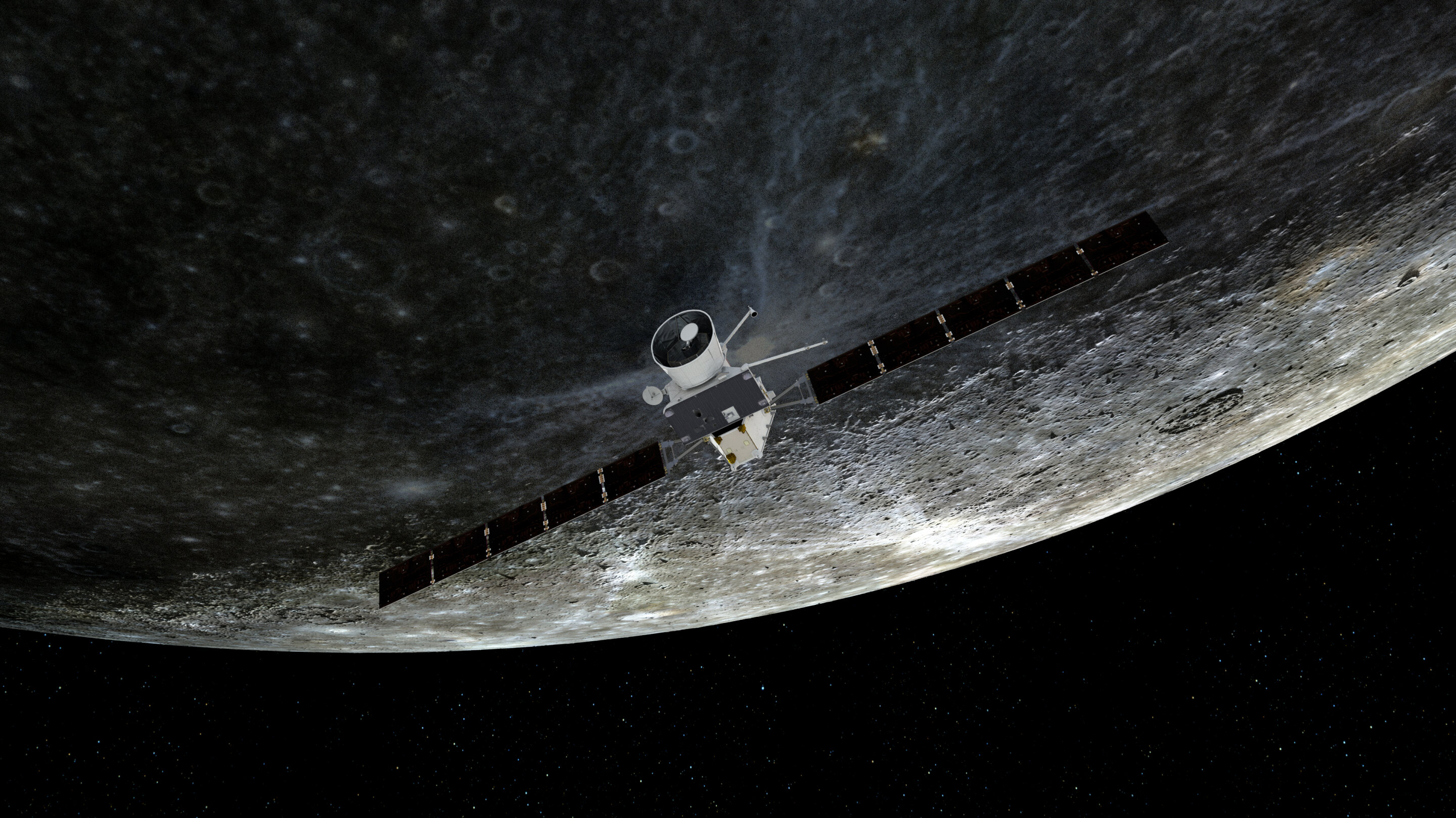Experience the awe-inspiring journey of the BepiColombo spacecraft as it embarks on its mission to explore the mysteries of Mercury. This international collaboration between the European Space Agency (ESA) and the Japan Aerospace Exploration Agency (JAXA) is pushing the boundaries of space exploration.
Currently, BepiColombo is getting ready for its next close flyby of Mercury on 19 June. Flying just 236 km above the planet’s surface, the spacecraft will capture breathtaking images of Mercury’s terrain. This flyby is the third of six gravity assist maneuvers that will guide BepiColombo through the inner solar system.
These flybys, combined with over 15,000 hours of solar electric propulsion operations, are crucial in counteracting the tremendous gravitational force of the sun. By gradually losing energy, BepiColombo will eventually enter Mercury’s orbit in 2025. The closest approach of this upcoming flyby will occur at 19:34 UTC (21:34 CEST), with mesmerizing images expected to be released the following day.
While the flyby offers an opportunity to fine-tune instrument operations and capture stunning visuals, its primary purpose is to utilize the gravity of Mercury to navigate BepiColombo’s trajectory. This mission, launched in October 2018, will make use of a total of nine planetary flybys—Earth, Venus, and Mercury—to successfully enter Mercury’s orbit.
After this flyby, BepiColombo will face the most challenging phase of its journey. The spacecraft will progressively rely on solar electric propulsion, employing additional thrust arcs to combat the sun’s gravitational pull. These thrust arcs, lasting from days to months, will be periodically interrupted for navigation and maneuver optimization.
During the upcoming flyby, the illuminated section of Mercury will enter the spacecraft’s field of view approximately 13 minutes after close approach, allowing for detailed imagery of the planet’s surface. Many in situ instruments will be activated to collect data, while two of BepiColombo’s monitoring cameras will capture the awe-inspiring visuals. Be prepared to be amazed as images are unveiled in the days following the flyby.
However, reaching Mercury is no easy feat. It is the least explored rocky planet in our solar system due to the complex nature of space travel. As BepiColombo nears the sun, the sun’s gravitational pull propels the spacecraft forward. Gravity assist flybys provide a fuel-efficient way to alter the course, but they require precise calculations and guidance.
On May 19, a significant chemical propulsion maneuver was conducted to correct BepiColombo’s orbit after minor thruster outages during the electric propulsion phase. These correction maneuvers are common during flybys, ensuring accurate distance and positioning. In this case, the maneuver compensated for errors, ensuring the spacecraft’s trajectory aligns with its intended path.
The upcoming flyby is meticulously planned to ensure a close approach to Mercury at the right distance, angle, and velocity. A flight dynamics expert from the ESA explains that events like this aim to gradually decrease the spacecraft’s energy to achieve capture by Mercury. By utilizing the gravity of Earth, Venus, and Mercury, BepiColombo’s velocity is gradually reduced.
While the challenges are immense, BepiColombo’s science instruments remain active during the cruise phase and will continue to operate during the flyby. Magnetic, plasma, and particle monitoring instruments will sample the environment, contributing valuable data to the scientific community. Furthermore, this flyby allows a glimpse into the exciting science that awaits during the main mission, with instruments like BELA and MORE being switched on for the first time.
BELA, the BepiColombo Laser Altimeter, will map Mercury’s surface, while MORE, the Mercury Orbiter Radio-science Experiment, will study the planet’s gravitational field and core. These instruments play a crucial role in advancing our understanding of Mercury’s unique characteristics.
Upon arrival at Mercury in December 2025, BepiColombo’s scientific modules—ESA’s Mercury Planetary Orbiter (MPO) and JAXA’s Mercury Magnetospheric Orbiter (MMO)—will separate from the Mercury Transfer Module (MTM) and enter distinct orbits around the planet. These modules house sophisticated instruments that will unravel the secrets of Mercury.
As we anticipate the remarkable discoveries ahead, we marvel at the meticulous planning, expertise, and precision required for successful space missions. The journey to Mercury is a testament to the unwavering dedication of the scientists and engineers involved in the BepiColombo mission. Stay tuned for more updates and prepare to witness the wonders of Mercury like never before.
Denial of responsibility! TechCodex is an automatic aggregator of the all world’s media. In each content, the hyperlink to the primary source is specified. All trademarks belong to their rightful owners, and all materials to their authors. For any complaint, please reach us at – [email protected]. We will take necessary action within 24 hours.

Jessica Irvine is a tech enthusiast specializing in gadgets. From smart home devices to cutting-edge electronics, Jessica explores the world of consumer tech, offering readers comprehensive reviews, hands-on experiences, and expert insights into the coolest and most innovative gadgets on the market.


